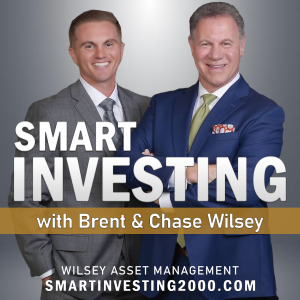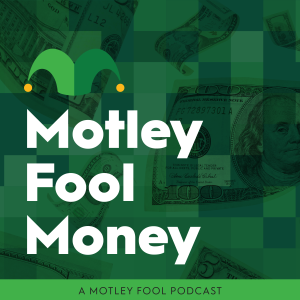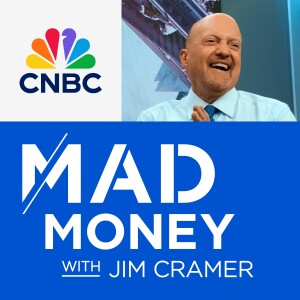

July 11th, 2025 | Crypto Crash, ETF Complexity, Dark Pools, Tax-Free Social Security?, Tripadvisor, Inc. (TRIP), Johnson & Johnson (JNJ), AMC Entertainment Holdings, Inc. (AMC) & KeyCorp (KEY)
Crypto losses increase 66% in 2024
At first you may be saying I thought Bitcoin has been increasing in value? While that is true, you have to remember that is only one of the many thousands of cryptocurrencies that are available. According to the FBI in 2024, there was 149,686 complaints for total losses of $9.3 billion. It was somewhat surprising to learn that people over 60 years old, who I thought knew better than to gamble with cryptocurrencies, was the most with losses totaling nearly $3 billion. If you live in California, Texas or Florida that’s where the most complaints came from with a cumulative loss of $3 billion. Mississippi was also largely impacted as the number of crypto scams per thousand was the highest at 42.1. Even though there are a far higher number of investors and larger dollars in stocks, the SEC reported nationwide just 583 enforcement actions for stock scams or stock complaints in 2024. These complaints included charges against advisors for untrue or unsubstantiated statements. Interesting to note there’s now something called AI washing, which charges firms for making false or misleading statements about their use of artificial intelligence. It is hard to make a comparison of stock scams and fraud versus cryptocurrencies, but with the far higher number of people investing in stocks vs cryptocurrencies I think it is safe to say that your risk of being scammed in stock investments is far lower than being scammed when dealing with cryptocurrencies. So not only are you taking a higher market risk by investing in cryptocurrencies, but you are also taking on the risk of being ripped off as well.
Have ETFs become too complicated?
The first ETF, which stands for exchange traded fund, was launched about 30 years ago. They were simple in design and you generally bought them because they held a set group of stocks or bonds using an index and charged a low fee. Today, there are now over 4000 ETFs that are listed on the New York Stock Exchange. This is more than the 2400 individual stocks listed on the exchange. In 2024 alone, 700 new ETFs were launched and 33 of those tracked cryptocurrencies. The assets have ballooned to $11 trillion and now account for 1/3 of money invested in long-term funds. Some of that growth has come from open end mutual funds, which have lost $1.2 trillion in the past two years. There are now 1300 active ETFs, which actually manage the portfolio for you like a mutual fund. A big difference is those funds can now be sold during market hours. With open ended mutual funds, you have to wait until the close of the market and then sell at the closing net asset value for the day. Nearly half of the 1300 active ETF were launched last year. It gets difficult for investors with over 4000 choices to decide which is best. Back in 2020, Cathie Wood grew to fame with her actively managed ARK Innovation ETF. The fund shot up 150% that year and assets hit $28 billion. Today, the NASDAQ composite has a five-year cumulative return of 108% and the ARRK fund has seen a decline of 2% and the assets are now under $7 billion. If you’re investing in an ETF to benefit from commodities, understand generally they use future contracts to track the underlying commodity. Commodity futures are not a perfect vehicle and they generally work better for speculators that do short-term trading. One exception to this is the SPDR gold shares which is a trust that holds the actual gold. In my opinion, it is far easier to analyze one company to invest in and then build a portfolio rather than trying to understand some of these ETFs that can use leverage or future contracts or whatever. I worry investors could be blindsided when they least expect it.
What is a dark pool exchange?
A dark pool exchange is an off the exchange platform where institutions can trade without broadcasting their buying or selling intentions publicly. People wonder why when we invest at Wilsey Asset Management we buy a company with the intent of holding it 3 to 5 years. For those who think they can do better by trading you are taking a toothpick to a gun fight. Exchanges and market makers make up nearly 87% of the daily trading volume, but these dark pools are trying to step in and do more of the trading, which I believe will leave the small investor in the dark and they might not know what certain stocks are trading at. I’m getting rather disgusted with how Wall Street is acting like the Wild West. FINRA another regulatory body seems to be OK with this and will be collecting fees from the dark pools. Fortunately, for the past two years, the SEC has not approved this form of trading, but with the new administration and the new SEC chairman, who seems to love the Wild West of trading, I’m sure we’ll see more of this craziness going forward. This does not mean that investors on Wall Street cannot do well. To be frank, I don’t care if we miss a penny or two on a trade since we are looking down the road 3 to 5 years, but if you’re doing multiple trades per day that penny of two adds up. This also seems to be adding a lot more volatility to the markets. This volatility will scare investors out of good quality investments because of what they are seeing on a daily basis and not understanding what is going on behind the scenes. Remember if you are investor, you are investing in a small piece of a large company and there are millions if not billions of shares that are trading so don’t worry about the short-term movements. Instead, make sure the investment you made was of good quality with sound earnings and a strong balance sheet that can weather any storm, even these dark pools.
Financial Planning: Is Social Security Now Tax-Free?
One of the major topics surrounding the One Big Beautiful Bill (OBBB) was the taxation of Social Security. Now that the bill has been signed into law, we know that the method used to tax Social Security remains unchanged—but many seniors will still see their overall tax liability go down. Most states, including California, do not tax Social Security. Federally, between 0% and 85% of benefits are reportable as income, meaning at least 15% is always tax-free. The taxable portion is based on a retiree’s combined income, which includes adjusted gross income, tax-exempt interest, and half of their Social Security benefits. This formula was not changed by the OBBB. However, the standard deduction is increasing substantially, which reduces taxable income and, in turn, lowers overall tax liability. Prior to the bill’s passage, a married couple aged 65 or older would have had a standard deduction of $33,200 in 2025 ($30,000 plus $3,200 for age). Starting in tax year 2025, that deduction can be as high as $46,700—a $13,500 increase. This results from a $1,500 increase to the base deduction for all filers, plus an additional $6,000 per person for those over age 65. Importantly, this extra $6,000 per senior (up to $12,000 per couple) is not technically part of the standard deduction—it is an above-the-line deduction that can be claimed even by those who itemize. This add-on begins to phase out when Modified Adjusted Gross Income exceeds $150,000 and is fully phased out above $250,000. As a result, taxpayers in the 10%, 12%, and 22% brackets are most likely to benefit. So, while Social Security is still taxable, more of that income may now be shielded from taxes due to the expanded deductions. Additionally, the bill prevents the federal tax brackets from reverting to higher 2017 levels in 2026. The brackets will now remain at 10%, 12%, 22%, 24%, 32%, 35%, and 37%, instead of increasing to 10%, 15%, 25%, 28%, 33%, 35%, and 39.6%. For retirees with taxable Social Security or other ordinary income, this means lower effective tax rates moving forward. In short, Social Security is still taxable—but seniors will likely pay less, or even nothing, thanks to these changes.
Companies Discussed: Tripadvisor, Inc. (TRIP), Johnson & Johnson (JNJ), AMC Entertainment Holdings, Inc. (AMC) & KeyCorp (KEY)
More Episodes
All Episodes>>Create Your Podcast In Minutes
- Full-featured podcast site
- Unlimited storage and bandwidth
- Comprehensive podcast stats
- Distribute to Apple Podcasts, Spotify, and more
- Make money with your podcast












